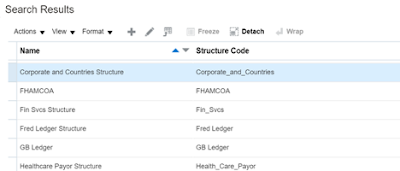Problem Statement:
Technically we can pass any
value (including hierarchy levels, normal columns values) using Action Links in
OAC. But in this case, We are required to pass EPM based hierarchy to drill ERP
based report. EPM summary report is having parent-child hierarchy and drill ERP
report is having level-based hierarchy, hence it became tough for to apply
filter in the receiving end report (ERP based OAC report). Because both
hierarchy structures are different, and we cannot determine which level to
filtered on the receiving end report during runtime.
Resolution:
1. Let’s create a EPM based OAC summary report by including Account hierarchy and all relevant dimension member combinations.












